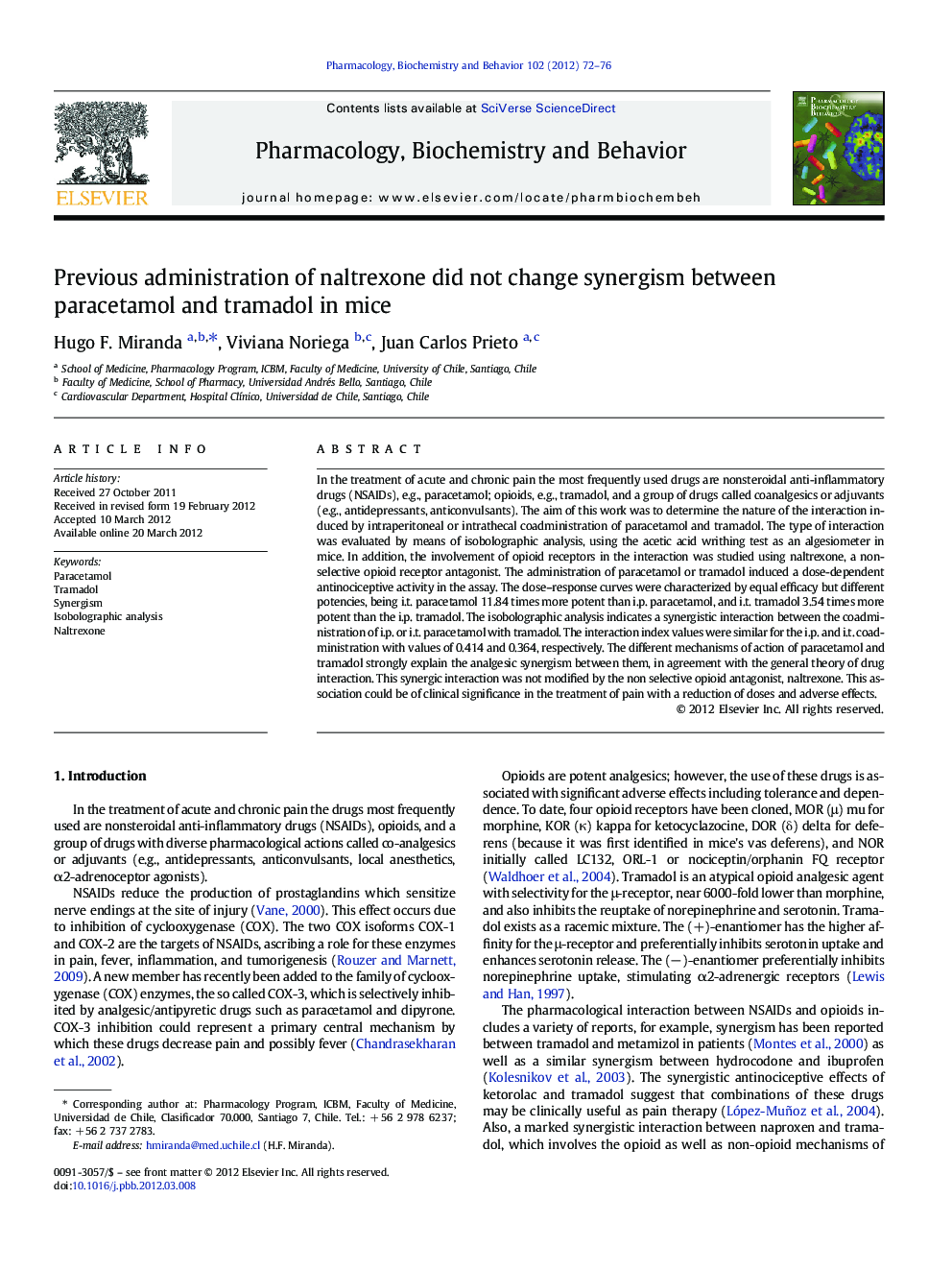| Article ID | Journal | Published Year | Pages | File Type |
|---|---|---|---|---|
| 10837855 | Pharmacology Biochemistry and Behavior | 2012 | 5 Pages |
Abstract
In the treatment of acute and chronic pain the most frequently used drugs are nonsteroidal anti-inflammatory drugs (NSAIDs), e.g., paracetamol; opioids, e.g., tramadol, and a group of drugs called coanalgesics or adjuvants (e.g., antidepressants, anticonvulsants). The aim of this work was to determine the nature of the interaction induced by intraperitoneal or intrathecal coadministration of paracetamol and tramadol. The type of interaction was evaluated by means of isobolographic analysis, using the acetic acid writhing test as an algesiometer in mice. In addition, the involvement of opioid receptors in the interaction was studied using naltrexone, a non-selective opioid receptor antagonist. The administration of paracetamol or tramadol induced a dose-dependent antinociceptive activity in the assay. The dose-response curves were characterized by equal efficacy but different potencies, being i.t. paracetamol 11.84 times more potent than i.p. paracetamol, and i.t. tramadol 3.54 times more potent than the i.p. tramadol. The isobolographic analysis indicates a synergistic interaction between the coadministration of i.p. or i.t. paracetamol with tramadol. The interaction index values were similar for the i.p. and i.t. coadministration with values of 0.414 and 0.364, respectively. The different mechanisms of action of paracetamol and tramadol strongly explain the analgesic synergism between them, in agreement with the general theory of drug interaction. This synergic interaction was not modified by the non selective opioid antagonist, naltrexone. This association could be of clinical significance in the treatment of pain with a reduction of doses and adverse effects.
Related Topics
Life Sciences
Biochemistry, Genetics and Molecular Biology
Biochemistry
Authors
Hugo F. Miranda, Viviana Noriega, Juan Carlos Prieto,
